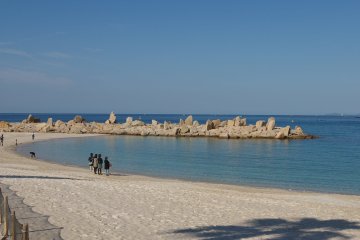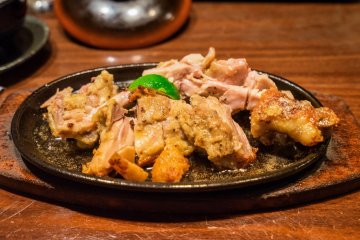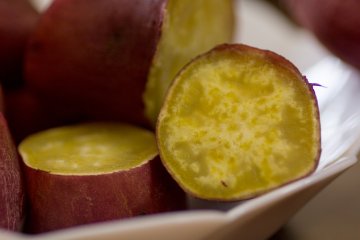The many sights of Tokushima, previously known as the Awa province, are bound to build up quite the appetite. Fortunately, the prefecture has no shortage of unique local dishes. The food from Tokushima has a lively history, often relating to local folklore and legends. Read on to find out about the area’s culture-rich cuisine.
Awa (Tokushima) Brand Beef, Pork and Chicken

Tokushima is famous for many dishes, but the meats raised in the prefecture are a cut above the rest. Awa cattle, a breed of black cattle, consistently produce Class A or B beef that by definition must rate over Grade 4 in quality. Local Awa pork has also been carefully bred over generations to ensure a supreme taste from its marbled, soft meat. Awa chicken (oniwatori), noted for its reddish streaks, combines a low-fat content with high levels of umami (rich taste) to make for a succulent selection. Ground chicken from Tokushima is highly sought after around Japan.
Tokushima Ramen

Tokushima ramen debuted in the Japanese noodle scene in 1999 when it was displayed at the Shin-Yokohama Ramen Museum. While customers can customize their orders, Tokushima ramen usually features a raw egg, spring onions, bean sprouts and a hearty and rich broth. Restaurants typically serve rice on the side as well. The two most popular places to eat Tokushima ramen are Inotani Ramen and Todai Ramen, both located in Tokushima city.
Dekomawashi (grilled skewers)

A traditional Iya Valley dish, dekomawashi is skewered goushiimo potato, iawdofu (tofu) and konjac, a common plant that grows in Asia and is also known as the devil's tongue. It is basted with miso sauce and then cooked over an open flame. The dish is named after its resemblance to traditional puppets. Deko comes from the Japanese word for puppets, and mawashi comes from the word for turning something over.
Kaizoku Ryori (pirate food)

A Tokushima original dish, pirate food is said to have been created by divers and fishermen grilling and eating their catch of the day on the beach. Visitors to Tokushima can enjoy freshly caught and grilled seafood, like a real fisherman enjoying the taste of the wild. The cuisine includes mollusks, lobsters, shrimp, abalone, and scallops. Restaurants can be found around Tokushima’s ports and beaches, and local inns and ryokans will also serve superb pirate food without requiring customers to stay the night.
Naruto Kintoki (sweet potatoes)

Tokushima is famous for its quality potatoes, and Naruto Kintoki is no exception. This is a special type of sweet potato, known for its golden and fluffy texture, that is grown in the Naruto area of Tokushima. They are named after the golden boy, a Japanese folk hero named Kintaro. Quite sweet, these potatoes can be fried and boiled, or even used to make pudding and ice cream. Naruto Kintoki is commonly sold by street vendors and is a popular snack after a long day of sightseeing.
Sobagome Zosui (buckwheat porridge)

Sobagome are buckwheat seeds that are boiled and dried. This regional specialty is made without any processing, making it a traditional and healthy method of cooking in Tokushima. According to the oral legend, the Taira Clan made this buckwheat porridge on New Year’s Day to remember their life in Kyoto before they fled to Iya after their defeat during the Genpei War. As rice is notoriously difficult to grow in Tokushima, buckwheat is used as a hearty substitute to create this unique dish that is loved by many locals.












